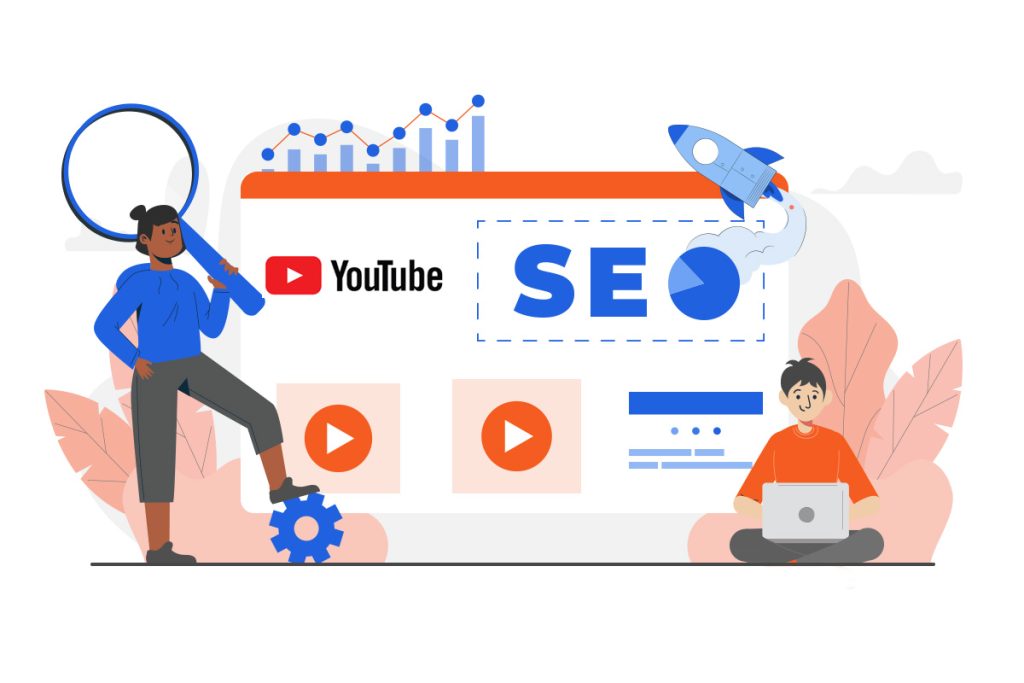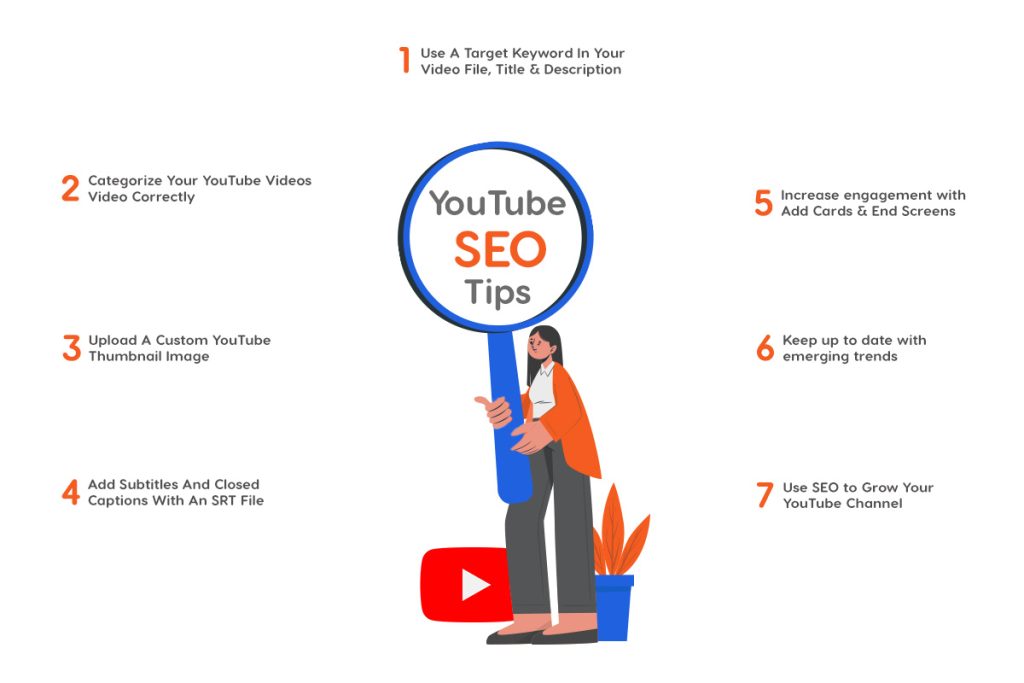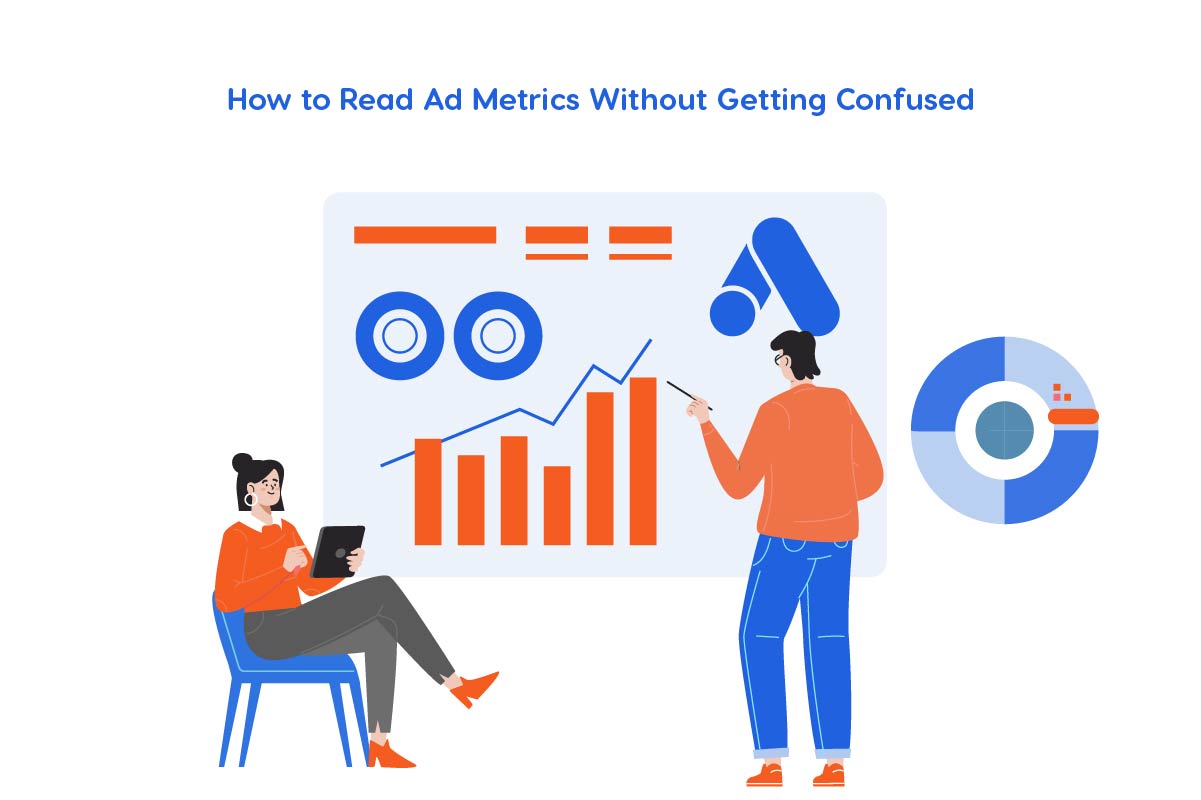YouTube is the second-largest search engine in the world with over 2 billion logged-in monthly users. 89% of businesses use video in their marketing, 68% plan to add it and 47% of all global internet users access YouTube monthly. If you want your videos to stand out, you need a solid YouTube SEO (Search Engine Optimization) strategy. Optimizing your videos for search helps you rank higher, attract more viewers and grow your channel. From keyword research and compelling titles to audience engagement and watch time optimization, mastering YouTube SEO is the key to growing your channel and boosting your video rankings. In this guide, our WebsCare team will cover the top YouTube SEO strategies to help your videos rank higher and get more views.

Why Podcasts on YouTube Are Becoming Popular in Pakistan? Let’s read more about it.
Proven YouTube SEO Strategies to Rank Your Videos Higher
Here is the list of Smart SEO Tips to Help Your YouTube Videos Stand Out, mentioned as:

Conduct Keyword Research
Conducting thorough keyword research is the foundation of effective YouTube SEO, as it helps you discover the exact phrases your target audience is typing into the search bar. To begin, use YouTube’s Search Suggest feature by typing a few words related to your topic; YouTube will automatically generate a list of popular and relevant search terms. These suggestions reflect what users are actively searching for and can guide you in choosing optimized keywords. Plus, use SEO tools like TubeBuddy, VidIQ and Ahrefs, which provide in-depth insights such as search volume, keyword difficulty, competition score and related keyword ideas, all of which help you select terms that are both popular and realistically achievable for your channel.
Another smart tactic is to analyze your competitors by observing which keywords high-performing channels in your niche are targeting in their titles, descriptions, and tags. A crucial tip is to prioritize long-tail keywords (e.g., “how to bake chocolate chip cookies at home”) rather than broad, generic ones like “chocolate chip cookies,” as these are more specific, less competitive and more likely to attract a targeted and engaged audience.
Optimizing Video Titles: Captivating and Keyword-Rich
Your video title is often the first point of contact with potential viewers. Optimizing your YouTube video title is essential for improving both visibility and viewer engagement. A strong title should be captivating and keyword-rich, naturally incorporating your primary keyword within the first half to help both YouTube’s algorithm and potential viewers quickly understand the content. Keep your title under 60 characters to avoid it being cut off in search results and ensure it’s specific and clear about the value your video offers.
Using power words like “Best,” “How to,” “Top,” and including numbers (e.g., “5 Tips”) can significantly boost click-through rates by making the title more compelling. However, it’s crucial to avoid misleading or clickbait titles that don’t reflect the actual content, as this can lead to poor watch time and damage your channel’s credibility. In essence, a well-crafted title should be search-friendly, click-worthy and genuinely aligned with the video’s message to effectively drive views and improve rankings.
Craft a Detailed Video Description
The video description provides context to both the vsiewer and YouTube’s algorithm. A well-optimized description helps your video appear in search results and suggested videos.
Use Relevant Tags Wisely
Tags are keywords you assign to your video to provide YouTube with more context about its content. While their direct impact on search rankings might have decreased over time, they still play a role in categorization and discoverability.
- Use the main keywords you identified during your research as your primary tags.
- Include a mix of broad tags (e.g., “photography”) and more specific tags (e.g., “beginner DSLR photography tips”).
- Use relevant long-tail keywords as tags to target more specific searches.
- Use tools like TubeBuddy or VidIQ to see the tags used by top-ranking videos in your niche. Don’t blindly copy them but use them for inspiration.
- Ensure all your tags accurately reflect the content of your video. Irrelevant or misleading tags can harm your video’s performance.
Design Eye-Catching Thumbnails
Designing eye-catching thumbnails is very important for attracting viewers and boosting your video’s click-through rate (CTR) which indirectly influences your YouTube SEO ranking. Although thumbnails aren’t a direct ranking factor, a high CTR signals to YouTube that your content is valuable and worth promoting. To create effective thumbnails, use bold and easily readable text to quickly convey the video’s main idea, even on smaller screens. Including expressive facial emotions helps capture attention and build curiosity, making viewers more likely to click. Maintaining brand consistency through specific colors, fonts and visual style not only reinforces your channel identity but also makes your content instantly recognizable in a crowded feed. Finally, ensure your thumbnails are high resolution with the recommended YouTube dimensions of 1280×720 pixels which ensures they look sharp and professional across all devices.
Why YouTube Sponsorships Work Better Than Traditional Ads in Pakistan? Let’s read more about it.
Enhancing Engagement Signals: Telling YouTube Your Video is Valuable
YouTube’s algorithm considers various engagement signals to determine the quality and relevance of your videos. High engagement signals indicate that viewers find your content valuable and are more likely to rank higher.
| Strategy | Description |
| Encourage Likes and Dislikes | While likes are positive, even constructive dislikes can provide valuable feedback. Encourage viewers to engage with the video. |
| Prompt Comments | Ask viewers questions or encourage them to share their thoughts in the comments section. Respond to comments to foster a sense of community. |
| Drive Watch Time and Audience Retention | Create engaging content that keeps viewers watching for longer. Analyze audience retention graphs to identify drop-off points and improve future videos. |
| Encourage Shares | Make it easy for viewers to share your videos on other platforms, increasing exposure and engagement. |
| Create Playlists | Organize videos into relevant playlists, encouraging viewers to watch multiple videos in a row, thus increasing overall watch time. |
| Use Cards and End Screens | Utilize YouTube cards to link to other relevant videos, playlists or external websites. Use end screens in the last 5-20 seconds to prompt subscriptions or recommend videos. |
Promote Your Videos via Other Platforms
Promoting your YouTube videos on social media platforms helps bring in more viewers and tells YouTube that your content is worth showing to more people. You can start by sharing your videos on social media like Facebook, Instagram, X (Twitter) and LinkedIn, just make sure to write a short, interesting caption and use hashtags. If you have a blog, you can add your video to a related post to give more value to your readers. You can also share your videos in forums or online communities where people are already talking about similar topics but be careful not to spam. Sending your video in an email newsletter is another great way to reach your subscribers directly. Lastly, if you have a website, adding (embedding) your YouTube videos there can keep people on your site longer and help both your site and video rank better in search results.
How to Grow a YouTube Channel in Pakistan Without Paid Promotions? Let’s read more about it.
Final Words
YouTube SEO is not a one-time task but an ongoing strategy. With the right approach, even new creators can climb the ranks and build a loyal audience. In this thorough article, our WebsCare research team has compiled a list of SEO Strategies to lift your video ranking. Combining keyword optimization, engaging content and strategic promotion can significantly boost your video rankings and maximize your reach. Stay consistent, stay creative and keep analyzing what works; your path to YouTube success starts with smart SEO.





